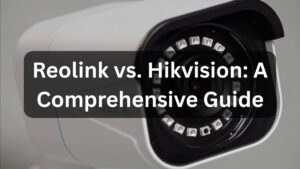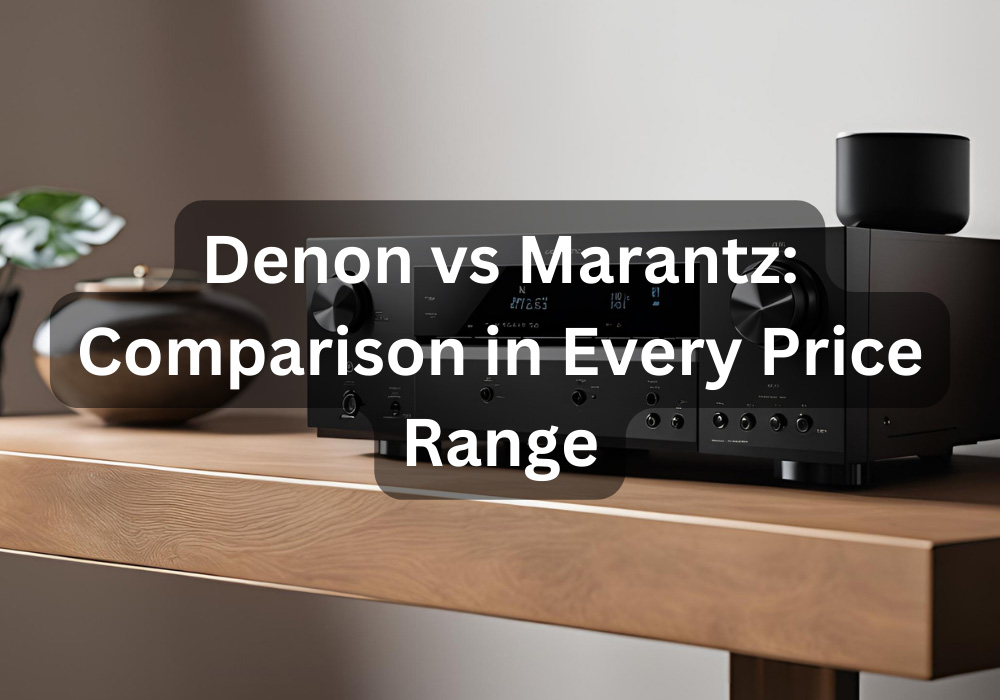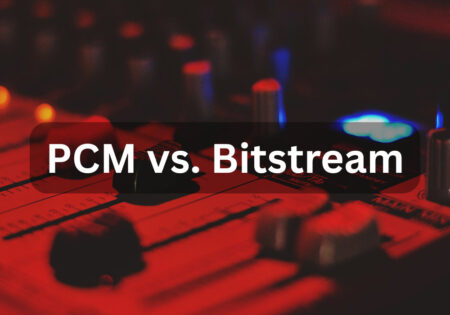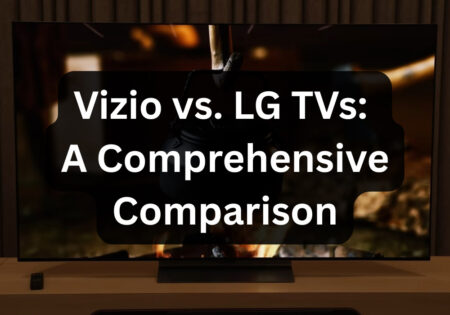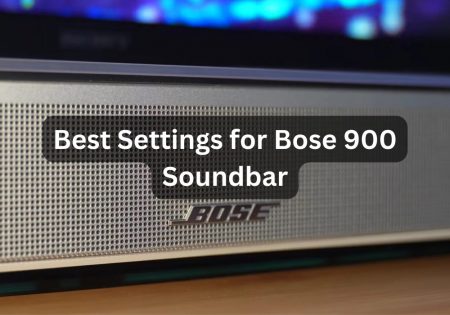Many of my visitors seek to compare Denon vs Marantz head-to-head when looking for an AV receiver that can truly complement their home theatre setup. Both brands offer excellent models in every price range, excelling in audio/video performance, connectivity, features, and build quality. So, I will compare some models from these brands in three price categories: budget, moderate, and premium. This helps you make the best choice according to your needs and budget.
Which One is Better, Denon or Marantz? (Quick Answer)
Suppose you’re willing to buy an AV receiver with a budget of less than $2000. In that case, I suggest going with a Denon receiver, as Denon receivers, in general, provide more value for money.
A Denon receiver, at the same price as a Marantz receiver, offers better sound, better picture, and more advanced features. However, suppose you plan to buy a high-end receiver. In that case, the competition is tighter as Marantz offers Cinema 50, and Denon offers AVR-X6700H. Here’s why:
- In the budget receiver category: Denon’s AVR-S760H offers better sound quality and video support compared to Marantz’s NR1510.
- In the moderately-priced receiver category: the Denon AVR-X2800H delivers superior sound quality compared to the Marantz Cinema 70S.
- In the high-end receiver category: we compared the Marantz Cinema 50 with the Denon AVR-X6700H. Denon’s sound is more powerful, while Marantz offers a Dirac Live calibration update. However, Denon’s receiver can currently be found at a lower price on the market.
Also Read:
Denon vs Onkyo
In the table below, you can compare the top models introduced in this article from Denon and Marantz at a glance (moving forward, we will get into the details of each model in its price class and will compare them thoroughly):
| Price Class | Model | Audio Performance | Video Performance | Connectivity | Features & Functionality |
| The Budget Class Jump to Comparison | Marantz NR1510 | 50W per channel, 98 dB SNR | 4K/60Hz, HDR10, HLG, Dolby Vision | 6 HDMI inputs, 1 output, eARC, Wi-Fi, Bluetooth, HEOS | Audyssey MultEQ, Alexa, Google, Siri, |
| Denon AVR-S760H | 75W per channel, 100 dB SNR, Dolby Atmos | 8K/60Hz, 4K/120Hz, HDR10+, Dolby Vision, 8K upscaling | 6 HDMI inputs (3 HDMI 2.1), 1 output, eARC, Wi-Fi, Bluetooth, HEOS | Audyssey MultEQ, Alexa, Google, Siri, Josh.ai, multi-zone (2) | |
| The Moderate Class Jump to Comparison | Marantz CINEMA 70s | 50W per channel, 94 dB SNR, Dolby Atmos | 8K/60Hz, 4K/120Hz, HDR10+, Dolby Vision, 8K upscaling | 6 HDMI inputs, 1 output, eARC, Wi-Fi, Bluetooth | Audyssey MultEQ XT, Alexa, Google, Siri, multi-zone (2) |
| Denon AVR-X2800H | 95W per channel, 100 dB SNR, Dolby Atmos | 8K/60Hz, 4K/120Hz, HDR10+, Dolby Vision, 8K upscaling | 6 HDMI inputs, 2 outputs, eARC, Wi-Fi, Bluetooth | Audyssey MultEQ XT, Alexa, Google, Siri, multi-zone (2) | |
| The Premium Class Jump to Comparison | Marantz Cinema 50 | 110W per channel, Dolby Atmos | 8K/60Hz, 4K/120Hz, HDR10+, Dolby Vision | 6 HDMI inputs (all 8K), 3 outputs, eARC, Wi-Fi, Bluetooth | Audyssey MultEQ XT32, Dirac Live upgrade, Alexa, Google, Siri, multi-zone (2) |
| Denon AVR-X6700H | 140W per channel, Dolby Atmos | 8K/60Hz, 4K/120Hz, HDR10+, Dolby Vision, Dynamic HDR | 8 HDMI inputs, 3 outputs, eARC, Wi-Fi, Bluetooth | Audyssey MultEQ XT32, Alexa, Google, Siri, Josh.ai, multi-zone (3) |
Brands Overview
Reputation and History of Marantz
Marantz was founded in 1953 by Saul Marantz. Over the years, they’ve successfully become a familiar name in the sound industry. Their signature warm and musical sound, combined with advanced technologies like HDAM (Hyper Dynamic Amplifier Module) circuitry, showcases their commitment to high-fidelity sound, which has helped them build a loyal customer base.
Reputation and History of Denon
Established in 1910, Denon is a renowned company known for manufacturing home theatre equipment that lasts very long! Combining robust technology with high-quality craftsmanship has earned them the trust of professionals and consumers. If anybody asks for my opinion on the best brand for AV receivers, I don’t hesitate to mention Denon receivers.
How do We Compare Denon with Marantz in this Article?
As I mentioned earlier, Denon and Marantz are compared in three separate price classes. I want the comparison to make sense to every reader out there.
In each price range, I introduce two models from each brand that I’ve already worked with and found to be great choices. After that, I compare them thoroughly in terms of audio performance, video performance, connectivity, features, and build quality. At the end of each section, there’s a verdict to help you finalize your decision based on your specific needs.
Denon vs Marantz: The Budget Class (Under $600)
For this section, our two contenders are:
- Marantz NR1510 ($600)
- Denon AVR-S760H ($600)
Important: You probably think, “$600 doesn’t seem so budget-friendly!” You are probably right. However, since we’re talking ranges here, and AV receivers can go as high as $7000 and beyond in the market, a $600 budget is the minimum required for more complex setups. However, there are more appropriately priced models that I can suggest. Contact me through the comments in this post for that.
Audio Performance: Marantz NR1510 vs. Denon AVR-S760H
To start, take a look at the table below, which compares the technical elements of both models regarding audio:
| Technical Aspect | Marantz NR1510 | Denon AVR-S760H | Winner |
|---|---|---|---|
| Power Output | 50W/channel at 8 ohms | 75W/channel at 8 ohms & 110W/channel at 6 ohms | Denon AVR-S760H |
| Amplifier Class | Class AB | Class AB | Tie |
| Impedance Compatibility | 4 & 8 ohm speakers | 4 & 8 ohm speakers | Tie |
| Total Harmonic Distortion (THD) | 0.08% | 0.08% | Tie |
| Signal-to-noise ratio (SNR) | 98 dB | 100 dB | Tie |
| Surround Sound Formats | DTS HD Master Audio and Dolby TrueHD | Dolby Atmos, DTS, and DTS Virtual | Denon AVR-S760H |
To simplify, both models are pretty similar in terms of audio performance. They both provide clear, noise-free sound for their price range.
They can be connected to various speakers without worrying about impedance mismatches. The audio maintains clarity even when you push the devices to their limits, like during a heavy action scene. If you have Klipsch speakers in your setup and are looking for the best receiver for Klipsch speakers, I say Denon S760H is definitely a top, budget-friendly choice.
Although Marantz NR1510 is impressive, Denon’s device has the upper hand here. For those with medium-sized rooms (typically between 150 to 300 square feet), the Denon AVR-S760H is the suitable choice because it provides a higher power output.
Additionally, Denon’s model offers advanced surround sound formats such as Dolby Atmos and DTS, which are essential for an immersive 3D experience. While Marantz falls short in providing these formats, they aren’t for everyone. But if you want a truly mesmerizing experience, go with Denon.
In the Denon vs. Marantz debate for budget class, the Denon AVR-S760H delivers superior power and unparalleled sound (Dolby Atmos, DTS) for medium rooms
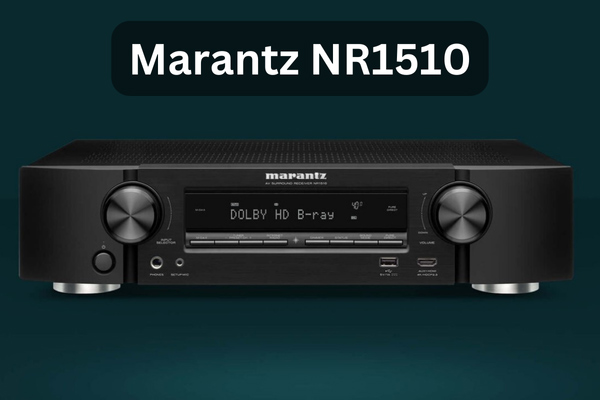
Video Performance: Marantz NR1510 vs. Denon AVR-S760H
I’ll spoil this section by announcing that Denon is the clear winner here, but first, look at the table below:
| Technical Aspect | Marantz NR1510 | Denon AVR-S760H | Winner |
|---|---|---|---|
| Resolution Support | 4K/60Hz, HDR10, HLG, Dolby Vision | 8K/60Hz, 4K/120Hz, HDR10, HDR10+, HLG, Dolby Vision | Denon AVR-S760H |
| Upscaling | No advanced upscaling | Advanced 8K upscaling | Denon AVR-S760H |
Marantz offers the standard resolution (4K/60Hz) and HDR support expected from a modern AV receiver. The colors are vibrant and lifelike, and the device doesn’t disappoint. However, it’s no match for Denon’s receiver.
The Denon AVR-S760H comes with 4K/120Hz and 8K/60Hz resolution support. It can handle 8K content, making it more future-proof, especially for those planning to buy an 8K TV or already have one.
Putting resolution aside, Denon’s receiver includes advanced 8K upscaling, meaning it can take lower-resolution content and enhance it to a quality near 8K. The NR1510 lacks upscaling capability, which can be a pain when watching older content.
Additionally, the Denon receiver supports HDR10+, a dynamic HDR technology that can adjust the color and brightness scene-by-scene, delivering better contrast and details. The Marantz NR1510 isn’t equipped with HDR10+.
Connectivity: Marantz NR1510 vs. Denon AVR-S760H
| Connectivity Aspect | Marantz NR1510 | Denon AVR-S760H | Winner |
|---|---|---|---|
| Wired Connections | 6 HDMI inputs, 1 HDMI output, HDCP 2.3, eARC, composite video, digital coaxial and optical, analog stereo, phono input, dual subwoofer outputs, pre-outs | 6 HDMI inputs (3 HDMI 2.1), 1 HDMI output, HDCP 2.3, eARC, digital optical and coaxial, analog stereo, phono input, dual subwoofer outputs, pre-outs | Denon AVR-S760H |
| Wireless Connections | Bluetooth, dual-band Wi-Fi, AirPlay 2, HEOS | Bluetooth, dual-band Wi-Fi, AirPlay 2, HEOS | Tie |
| Network Features | Ethernet, DLNA | Ethernet, DLNA | Tie |
| Streaming Services Integration | Spotify, Tidal, Pandora, Amazon Music | Spotify, Pandora, Amazon Music, Tidal | Tie |
As the table above shows, both devices are excellent in terms of wired and wireless connectivity. They offer many HDMI ports, coaxial, optical, stereo, phono inputs, dual subwoofer outputs, and pre-outs. You’ve got lots of connectivity options with these two! Denon’s model has 3 HDMI 2.1 inputs necessary for 4K/60Hz and 8K/120Hz pass-through. In contrast, Marantz’s model doesn’t have HDMI 2.1, which isn’t needed since, as I mentioned earlier, it neither supports 8K nor dynamic HDR.
Both devices are equipped with Wi-Fi and Bluetooth for wireless connectivity, and they both support wired network connection through Ethernet ports.
The streaming possibilities are fantastic on both devices. Spotify, Tidal, Pandora, Amazon Music, Deezer, SiriusXM, Napster, and SoundCloud are all supported through the built-in HEOS app on both receivers.
Features and Functionalities: Marantz NR1510 vs. Denon AVR-S760H
| Feature Aspect | Marantz NR1510 | Denon AVR-S760H | Winner |
|---|---|---|---|
| Calibration | Audyssey MultEQ | Audyssey MultEQ, MultEQ Editor app | Denon AVR-S760H |
| Zones and Multi-Room Audio | None | Supports 2 zones | Denon AVR-S760H |
| Voice Control | Amazon Alexa, Google Assistant, Apple Siri | Amazon Alexa, Google Assistant, Apple Siri, Josh.ai | Denon AVR-S760H |
So, what does all this jargon mean to you? The table shows that our Denon nominee outperforms the Marantz competitor in this area.
Both models come with Audyssey MultEQ technology for calibration. This automatic feature utilizes a microphone to adjust the sound settings according to the acoustics of your room to provide the best experience. However, Denon’s receiver takes it a step further with the Audyssey MultEQ Editor app. This app lets you change the calibration settings to your liking and gives you more control.
Talking about sound manipulation techs, both devices are equipped with Audyssey Dynamic EQ and Audyssey Dynamic Volume. To be precise, the first feature helps maintain sound quality at all volume levels, and the second monitors the audio signal in real time to avoid sudden jumps in volume. You’ll find these features very helpful.
Although the Marantz NR1510 has HEOS technology, which makes streaming in various rooms possible, it doesn’t support the multi-room feature, meaning it can’t simultaneously play different audio or video sources in separate home areas.
Denon, on the other hand, supports 2 zones. The multi-zone feature can be controlled through the HEOS app. Neither device disappoints in voice control, and they’re compatible with all three major voice assistants (Siri, Alexa, and Google Assistant). However, Denon is also compatible with Josh.ai, giving it a slight edge.
These reasons prove that while the Marantz NR1510 is a great receiver, it can’t match the Denon AVR-S760H regarding features and functionalities.
The Marantz NR1510 provides HEOS streaming but lacks multi-room capabilities, whereas Denon AVR-S760H excels with 2-zone support.
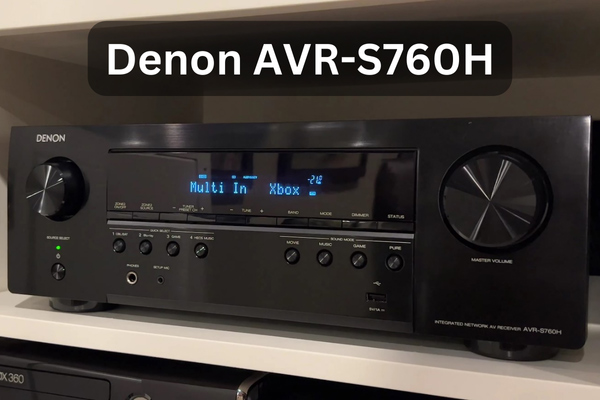
Build Quality & Design: Marantz NR1510 vs. Denon AVR-S760H
Build quality is important when buying an AV receiver. These devices aren’t cheap, so you want them to work well for many years. Therefore, the model you buy must be built with reliable materials and have appropriate heat management. Fortunately, neither of these models is weak in terms of build quality.
Marantz’s front panel is made of sleek, brushed metal, which gives it a premium look. The overall construction is noticeably durable and is often praised for it. The design of this 18-pound receiver is more compact than the Denon AVR-S760H, making it a better choice for smaller spaces. Ventilation isn’t an issue with this device; it doesn’t overheat after considerable usage.
On the other hand, Denon’s receiver also comes with a metal front panel and robust chassis. However, the device is heavier (19 pounds) and larger than the Marantz NR1510. It makes sense, as it needs to house all the additional features we just discussed! It, too, can effectively manage heat during prolonged use, and the device is a reliable companion in the long run.
So, which is better, Marantz NR1510 or Denon AVR-S760H?
According to what I’ve seen, either of the models is an excellent choice to make. Still, the Denon AVR-S760H is the more feature-full and future-proof choice, and that’s brightly clear if you’ve gone through their comparison; Denon’s receiver offers higher power output, supports higher resolution and dynamic HDR and features multi-zone, making it the better choice than Marantz NR1510 overall.
Marantz vs Denon: The Moderate Class ($600 – $1200)
These are two impressive receivers from Denon and Marantz that we’ll dig into moving forward:
- Marantz Cinema 70s ($1200)
- Denon AVR-X2800H ($1200)
Audio Performance: Marantz CINEMA 70s vs. Denon AVR-X2800H
| Technical Aspect | Marantz CINEMA 70s | Denon AVR-X2800H | Winner |
|---|---|---|---|
| Power Output | 50 watts per channel at 8 ohms, 100 watts per channel at 6 ohms | 95 watts per channel at 8 ohms, 125 watts per channel at 6 ohms | Denon AVR-X2800H |
| Amplifier Class | Class AB | Class AB | Tie |
| Impedance Compatibility | 4-ohm and 8-ohm speakers | 4 to 16-ohm speakers | Denon AVR-X2800H |
| Total Harmonic Distortion (THD) | 0.08% | 0.08% | Denon AVR-X2800H |
| Signal-to-noise ratio (SNR) | 94 dB | 100 dB | Denon AVR-X2800H |
| Surround Sound Formats | Dolby Atmos, DTS, Auro-3D, Dolby Atmos Height Virtualization, DTS Virtual | Dolby Atmos, DTS, DTS Virtual, Dolby Atmos Height Virtualization | Denon AVR-X2800H |
Both models appear competitive when it comes to sound quality. Marantz, being a well-known brand in sound technology, truly showcases its ability to produce clear sound in the Cinema 70S. Still, several reasons make the Denon AVR-X2800H more robust in terms of audio performance.
As the table suggests, Denon’s receiver provides a higher power output, making it more suitable for larger rooms and complex setups. In addition, Denon’s receiver has minimal distortion when you turn up the sound to high volumes. At the same time, the Cinema 70S loses sound clarity at louder volumes.
Additionally, Denon’s receiver has a broader impedance compatibility range, which is compatible with diverse speaker setups. However, Cinema 70S is impressively compatible with this.
Another thing to consider is the receiver’s ability to minimize background noise. The Marantz Cinema 70S helps with that, but considering its price, it should perform much better than I witnessed. The X2800H, on the other hand, was slightly better at keeping the audio clear and preventing background noise from interfering.
In terms of supported surround sound formats, neither of the receivers disappoints. As you see in the table, both devices support the most advanced technologies, making them reliable choices for an immersive 3D experience.
In the Marantz vs Denon comparison, Denon’s receiver preserves pristine sound at high volumes, whereas the Cinema 70S falters in clarity
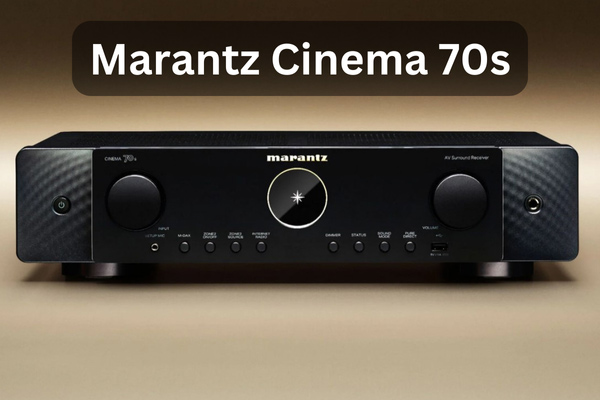
Video Performance: Marantz CINEMA 70s vs. Denon AVR-X2800H
| Technical Aspect | Marantz CINEMA 70s | Denon AVR-X2800H | Winner |
|---|---|---|---|
| Resolution Support | 8K/60Hz, 4K/120Hz, HDR10, HLG, Dolby Vision, HDR10+, Dynamic HDR | 8K/60Hz, 4K/120Hz, HDR10, HLG, Dolby Vision, HDR10+, Dynamic HDR | Tie |
| Upscaling | 8K upscaling | 8K upscaling | Tie |
| Pass-through | 8K/60Hz, 4K/120Hz pass-through, eARC, HDR formats | 8K/60Hz, 4K/120Hz pass-through, eARC, HDR formats | Tie |
Our two nominees from Denon and Marantz won’t let you down in the video performance category! The table shows that both devices support 4K resolution at 120Hz and 8K at 60Hz. Both offer 8K upscaling and support major HDR formats, including dynamic HDR like HDR10+ and Dolby Vision.
These aren’t just numbers and names on paper. According to our tests, both devices can genuinely deliver a mesmerizing picture. The color accuracy and vibrancy, brightness, contrast—everything looked good. They both performed well in upscaling lower-resolution content to 8K on compatible displays.
Connectivity: Marantz CINEMA 70s vs. Denon AVR-X2800H
| Connectivity Aspect | Marantz CINEMA 70s | Denon AVR-X2800H | Winner |
|---|---|---|---|
| Wired Connections | 6 HDMI inputs, 1 HDMI output, 8K/60Hz and 4K/120Hz on 3 inputs, optical, coaxial, analog RCA | 6 HDMI inputs, 2 HDMI outputs, front USB port, 8K/60Hz, and 4K/120Hz, optical, coaxial, analog RCA | Denon AVR-X2800H |
| Wireless Connections | Wi-Fi, Bluetooth, AirPlay 2, HEOS | Wi-Fi, Bluetooth, AirPlay 2, HEOS, Bluetooth Audio Transmitter | Denon AVR-X2800H |
| Network Features | Ethernet, DLNA, internet radio | Ethernet, DLNA, internet radio | Tie |
| Streaming Services Integration | Spotify, Tidal, Pandora (HEOS) | Spotify, Tidal, Pandora (HEOS) | Tie |
With either receiver, you can rest assured about connection opportunities.
Looking at wired connections, you can see 6 HDMI inputs on both devices. However, Denon has one extra HDMI output compared to Marantz’s single one, giving it a slight edge. You can find optical, coaxial, analogue RCA, and USB ports on both receivers.
Both receivers can connect to the network through Wi-Fi or an Ethernet port. They also both support DLNA, allowing users to stream local media. Besides Wi-Fi, both devices support Bluetooth and AirPlay 2 as alternative wireless connection types.
Popular streaming services like Spotify, Pandora, Tidal, etc., are supported by both receivers through the HEOS app, providing users with a vast library of content. You won’t find significant differences between these two models’ connectivity options, and neither will disappoint.
Features and Functionalities: Marantz CINEMA 70s vs. Denon AVR-X2800H
| Feature Aspect | Marantz CINEMA 70s | Denon AVR-X2800H | Winner |
|---|---|---|---|
| Calibration | Audyssey MultEQ XT, MultEQ Editor app | Audyssey MultEQ XT, MultEQ Editor app | Tie |
| Zones and Multi-Room Audio | HEOS integration, Zone 2 capability | HEOS integration, Zone 2 functionality | Tie |
| Voice Control | Amazon Alexa, Google Assistant, Apple Siri | Amazon Alexa, Google Assistant, Apple Siri | Tie |
| User Interface | The intuitive on-screen display, user-friendly remote, Marantz AVR Remote app | 1080p graphical user interface, Setup Assistant, AVR Remote app | Denon AVR-X2800H |
This area is where the Marantz Cinema 70S and Denon AVR-X2800H look like identical brothers!
Looking at calibration technologies, both models are equipped with Audyssey MultEQ for auto-calibration. This time, unlike the budget models, both are compatible with the Audyssey MultEQ Editor app, allowing control over the calibration process.
While MultEQ is reasonably practical for most users, it may not satisfy those who prefer absolute control over calibrating their sound, especially in lower frequencies like the bass region.
Regarding the multi-zone feature, both support 2 zones, meaning you can simultaneously play different media in two separate rooms. Moving on to voice control, both receivers are compatible with all three popular assistants, including Alexa, Siri, and Google Assistant.
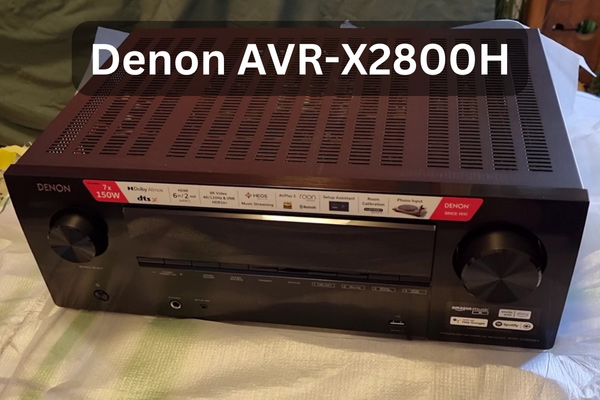
Build Quality and Design: Marantz CINEMA 70s vs. Denon AVR-X2800H
I’m not disappointed with either of these receivers’ build quality. They are equipped with a robust chassis and a metal front panel, giving them a premium look and feel. However, the Marantz Cinema 70S is a better fit for those who prefer a slim and compact design. At the same time, Denon’s X2800H is well-suited for those who prefer a more classic AV receiver look.
Heat management is good on these receivers. They don’t overheat or lose efficiency during long sessions and remain reliable companions.
So, which one is better, the Marantz CINEMA 70s or the Denon AVR-X2800H?
There’s no “bad” or “good” option with these two, as they are both chosen from a list of many models from Denon and Marantz. However, between our two nominees here, I believe that the Denon AVR-X2800H offers better value for money because it outshines the Marantz Cinema 70S in audio performance.
Marantz vs Denon: The Premium Class (Over $1200)
If you’re looking for a high-end receiver for your setup from Marantz or Denon, I find these two models to be performance beasts:
- Marantz Cinema 50 ($2500)
- Denon AVR-X6700H ($2000)
Let’s dig in to figure out which one’s a better choice for you.
Audio Performance: Marantz Cinema 50 vs. Denon AVR-X6700H
| Technical Aspect | Marantz Cinema 50 | Denon AVR-X6700H | Winner |
|---|---|---|---|
| Power Output | 110 watts per channel at 8 ohms, 150 watts per channel at 6 ohms | 140 watts per channel at 8 ohms, 175 watts per channel at 6 ohms | Denon AVR-X6700H |
| Amplifier Class | Class A/B | Class A/B | Tie |
| Impedance Compatibility | 4-ohm and 8-ohm speakers | 4 to 16-ohm speakers | Denon AVR-X6700H |
| Total Harmonic Distortion (THD) | 0.08% | 0.08% | Tie |
| Signal-to-Noise Ratio (SNR) | High (exact figure not specified) | High (exact figure not specified) | Tie |
| Surround Sound Formats | Dolby Atmos, DTS, Auro-3D, 360 Reality Audio, MPEG-H | Dolby Atmos, DTS, Auro-3D, Dolby Atmos Height Virtualization | Tie |
When we say these two models are high-end, premium receivers, it means you definitely should expect big names and numbers from them! This is also the case when you take a look at their audio performance.
As you see, both Cinema 50 and X6700H are super capable of handling the most complex setups. Both devices are impressive.
The Cinema 50, delivering 110 watts per channel at 8 ohms and 150 watts per channel at 6 ohms, is able to drive most speaker setups without any struggle.
However, we have the Denon X6700H on the other side, which provides 140 watts per channel at 8 ohms and 175 watts per channel at 6 ohms, meaning that it has a significant ability to handle the most complex and demanding speaker systems with ease. So, while both are unbelievably powerful, Denon steals the show here.
The impedance compatibility range for both receivers is 4 to 16 ohms. This means you can safely connect speakers in this range to these receivers, making them compatible with many speakers.
Both devices showcase the meaning of a true high-end receiver in terms of audio performance. The sound is distortion-free and clear, with the lowest background noise guaranteed.
They’re also equally matched in supported surround sound formats. Marantz Cinema 50 is compatible with Dolby Atmos, DTS, and Auro-3D and supports 360 Reality Audio along with MPEG-H, ensuring users it can deliver an immersive audio experience.
In contrast, Denon’s receiver supports Dolby Atmos, DTS, and Auro-3D. It also features Dolby Atmos Height Virtualization for simulating surround sound without needing ceiling speakers. Therefore, we have two competent receivers for delivering 3D sound.
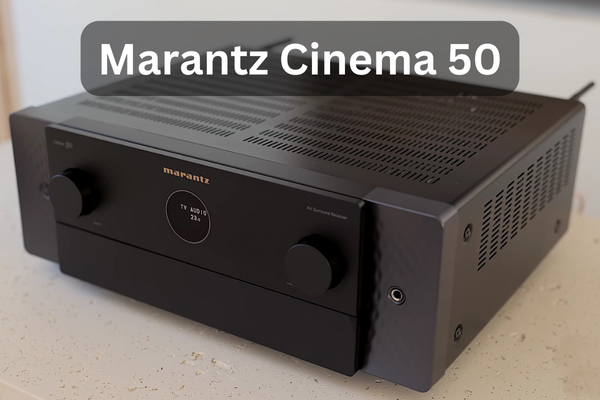
Video Performance: Marantz Cinema 50 and Denon AVR-X6700H
| Technical Aspect | Marantz Cinema 50 | Denon AVR-X6700H | Winner |
|---|---|---|---|
| Resolution Support | 8K/60Hz, 4K/120Hz, HDR10, HDR10+, Dolby Vision, HLG | 8K/60Hz, 4K/120Hz, HDR10, HDR10+, Dolby Vision, HLG, Dynamic HDR | Tie |
| Upscaling | 8K upscaling | 8K upscaling | Tie |
| Pass-through | 8K/60Hz, 4K/120Hz pass-through, Dolby Vision, HDR10+, HLG, VRR, ALLM | 8K/60Hz, 4K/120Hz pass-through, Dolby Vision, HDR10+, HLG, Dynamic HDR, VRR, ALLM, QFT | Denon AVR-X6700H |
Resolution support is what we all expect from a high-end receiver on both models. They support 4K/120Hz and 8K/60Hz, providing the sharpest and most detailed images available today, and they’re also future-proof for upcoming video formats.
In addition, neither of the receivers falls short in terms of HDR. Both support HDR10, HDR10+, Dolby Vision, HLG, and Dynamic HDR. You can see how exquisite the colors are, the contrast is perfect, and the brightness is robust.
Plus, there’s good news for gamers. Both models offer ALLM (Auto Low Latency Mode) and VRR (Variable Refresh Rate). These features help reduce the input lag to the minimum level and eliminate frame tearing, resulting in a very smooth gaming experience.
Adding to the list of perfect features of these two receivers, we can look at upscaling. Both models can enhance SD, HD, and 4K content to 8K on compatible displays, delivering an even more excellent visual experience.
Connectivity: Marantz Cinema 50 and Denon AVR-X6700H
| Connectivity Aspect | Marantz Cinema 50 | Denon AVR-X6700H | Winner |
|---|---|---|---|
| Wired Connections | 6 HDMI inputs (all 8K), 3 HDMI outputs (1 with eARC), 2 optical, 2 coaxial, 6 analog (including phono) | 8 HDMI inputs, 3 HDMI outputs (all 8K, 1 with eARC), 2 optical, 2 coaxial, 6 analog (including phono) | Denon AVR-X6700H |
| Wireless Connections | Bluetooth, Wi-Fi, AirPlay 2, HEOS | Bluetooth, Wi-Fi, AirPlay 2, HEOS, Bluetooth headphone streaming | Denon AVR-X6700H |
| Network Features | Ethernet, DLNA, internet radio | Ethernet, DLNA, internet radio | Tie |
| Streaming Services Integration | Spotify, Tidal, Pandora, Amazon Music, Deezer (HEOS) | Spotify, Tidal, Pandora, Amazon Music, Deezer, Napster, SoundCloud (HEOS) | Denon AVR-X6700H |
Both models offer extensive HDMI ports, but as you see in the table, Denon’s receiver offers two additional HDMI inputs compared to the Marantz Cinema 50. One of the HDMI outputs on each receiver supports eARC. Audio inputs and outputs are also the same as indicated in the table. The overall wired connectivity is the same, and there’s not much difference. However, Denon’s two additional HDMI inputs may be of benefit to some people.
Network connectivity is guaranteed on both devices thanks to built-in Wi-Fi and an Ethernet port. Other than Wi-Fi, both models support AirPlay 2 and Bluetooth for additional wireless connectivity options. Every primary streaming service, such as Spotify, Tidal, Amazon Music, Deezer, Pandora, etc., is also supported thanks to the HEOS platform integrated into both devices.
Features and Functionalities: Marantz Cinema 50 and Denon AVR-X6700H
| Feature Aspect | Marantz Cinema 50 | Denon AVR-X6700H | Winner |
|---|---|---|---|
| Calibration | Audyssey MultEQ XT32, Dirac Live upgradability | Audyssey MultEQ XT32, Dynamic Volume, Dynamic EQ, Sub EQ HT | Tie |
| Zones and Multi-Room Audio | HEOS Built-in, 2 zones | HEOS Built-in, 3 zones | Denon AVR-X6700H |
| Voice Control | Amazon Alexa, Google Assistant, Apple Siri | Amazon Alexa, Google Assistant, Apple Siri, Josh.ai | Denon AVR-X6700H |
| User Interface | Clear on-screen display, Marantz AVR Remote App, HEOS app | Award-winning on-screen Setup Assistant, Denon AVR Remote App | Tie |
Calibration technology is an area where the Marantz Cinema 50 pushes ahead of the Denon X6700H. Don’t get me wrong, Denon’s calibration tech, Audyssey MultEQ XT32, is an advanced calibration system. However, it isn’t as effective as I want it to be when it comes to lower frequencies, which results in less accurate bass management.
The Cinema 50, on the other hand, while incorporating MultEQ XT32, can be upgraded to include Dirac Live calibration technology, which is the most sophisticated and advanced calibration system right now. I haven’t seen any calibration technology with more control features than Dirac Live, that’s why I give a positive point to Cinema 50 here.
While Cinema 50 steals the show in terms of calibration, the Denon X6700H has the upper hand in the multi-zone feature. The Cinema 50, featuring HEOS Built-in, can support 2 zones, while Denon’s receiver, also having the HEOS Built-in technology, supports 3 zones, making it the better choice for more complex audio distribution needs.
Both receivers support the leading voice assistants (Siri, Alexa, Google Assistant) to satisfy every user, regardless of their preferred smart home platform. However, Denon’s receiver has a slight edge here thanks to its support for Josh.ai.
In the Denon vs. Marantz comparison, calibration technology is where the Marantz Cinema 50 outshines the Denon X6700, thanks to its upgradable Dirac Live feature.
Build Quality & Design: Marantz Cinema 50 vs Denon AVR-X6700H
Both models effectively reflect the look and feel you expect from a premium device. The Cinema 50, having a different style from the rest of Marantz’s receivers, features a truly chic design. This 29-pound device is made of carbon fibre, which contributes to its durability.
The Denon AVR-X6700H, on the other hand, appears with the typical classic style of Denon’s receivers. Made from solid materials, it weighs about 32 pounds, making it heavier than the Marantz Cinema 50.
In terms of heat management, I saw no problem with either of the devices. They performed well under long tests without overheating. However, some users have reported overheating issues with the Denon AVR-X6700H, which means the unit’s ventilation must be checked with more care to avoid potential overheating problems.
So, which is Better, Marantz Cinema 50 or Denon AVR-X6700H?
In this price range, you should be OK with either of the devices. Both models offer extensive specifications and have a full range of advanced features and functionalities.
Compared to the Cinema 50, Denon’s receiver excels with its higher power output, additional supported zone in the multi-zone feature (3 zones), and two additional HDMI inputs.
At the same time, Marantz’s beast is the better option in terms of calibration technology (Dirac Live). Plus, some users have reported overheating issues with the Denon AVR-X6700H, although I didn’t witness it during my test. The final choice depends on your specific needs, but I guarantee that neither of these two will be disappointing.
Denon vs Marantz: User Interface
The interface of both brands’ receivers is pretty user-friendly. I had a good time working with either of them. Both brands come with an intuitive on-screen display and a functional remote control. However, I found Denon’s remote control to be more comprehensive and Marantz’s more straightforward.
Both brands provide users with a control app that lets them control their receivers remotely. However, Denon’s app was more polished and provided a smoother experience for me. But don’t get me wrong, the Marantz AVR Remote app was suitable, too, but more rudimentary.
Conclusion
In this article, I tried to compare Denon vs Marantz in three price ranges to better understand the two brands you want to buy from. As you saw, Denon provided better value for money overall, and I suggest you invest in a Denon AV receiver since Marantz, while being an excellent brand, is generally more expensive than Denon.
